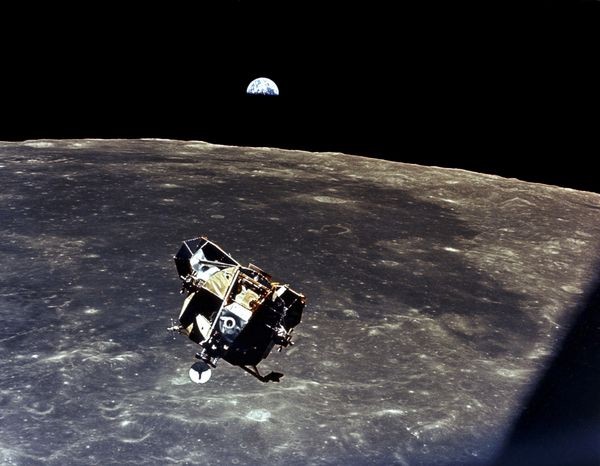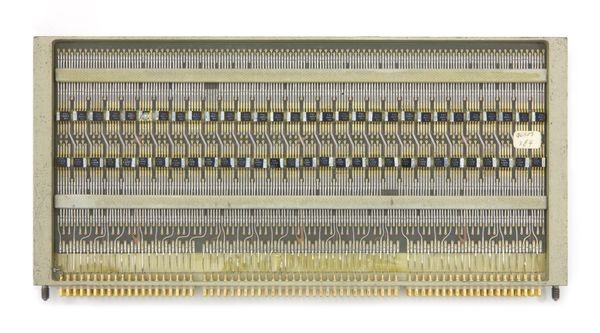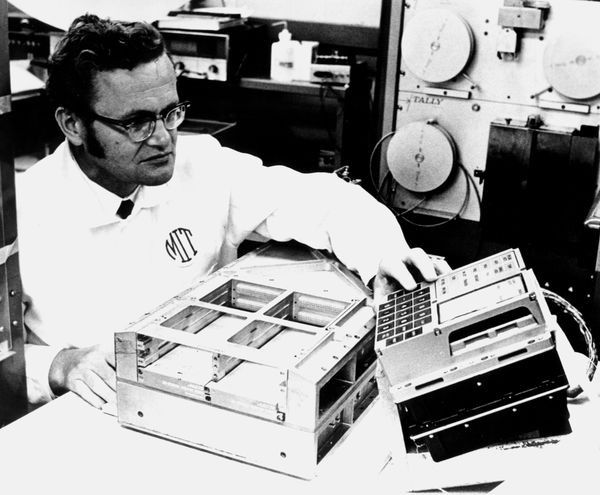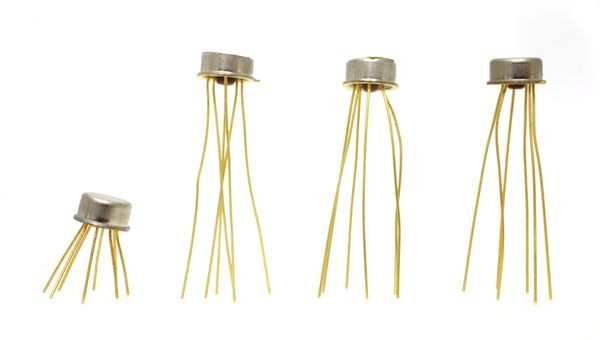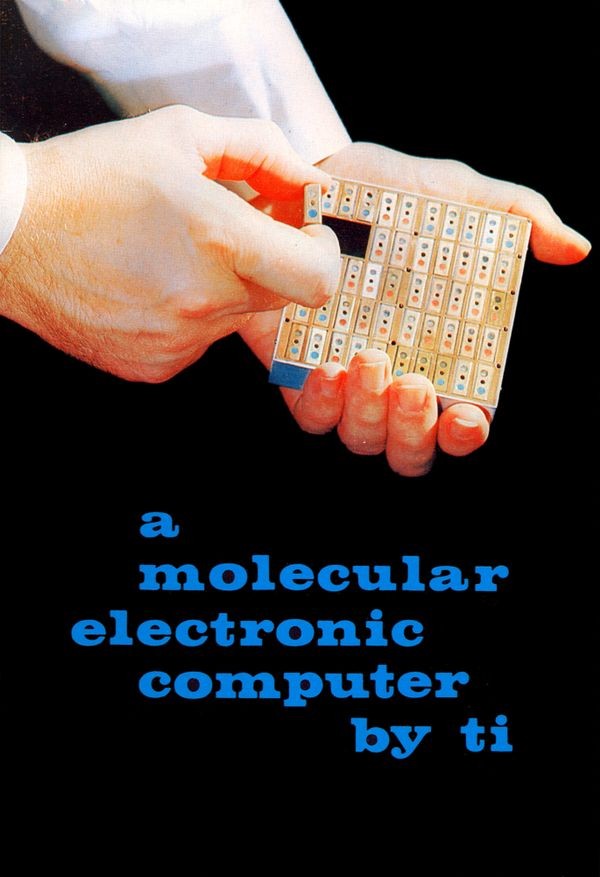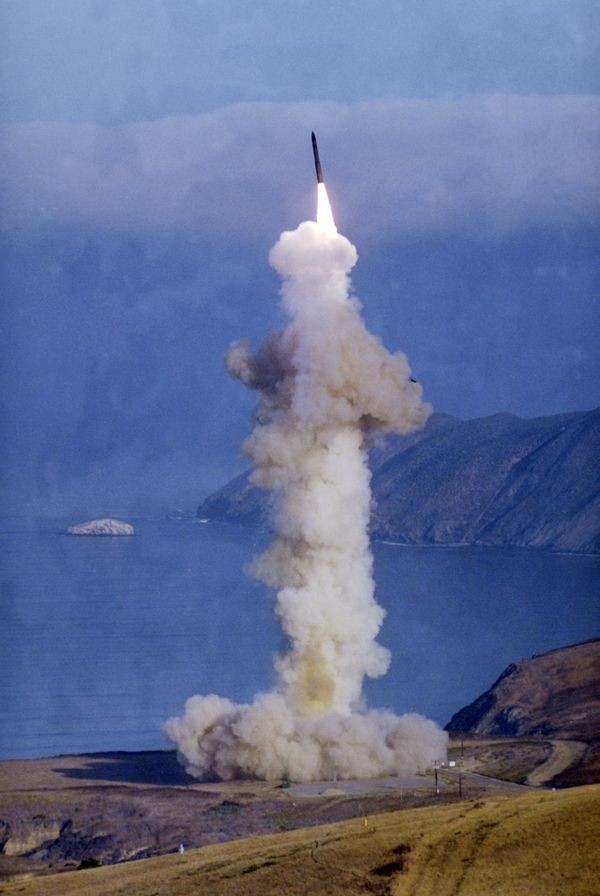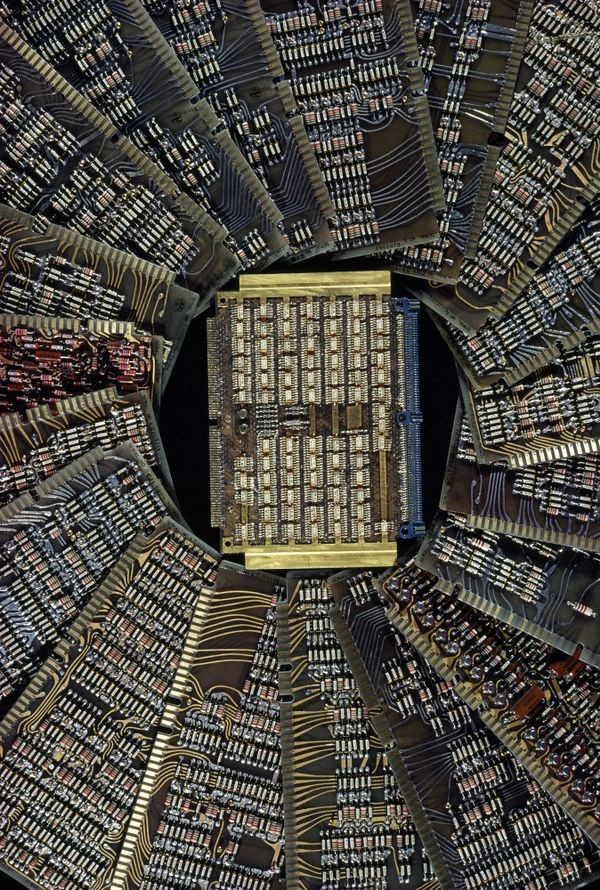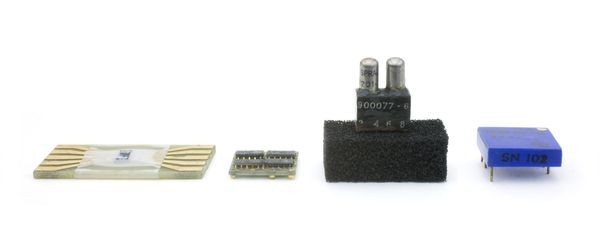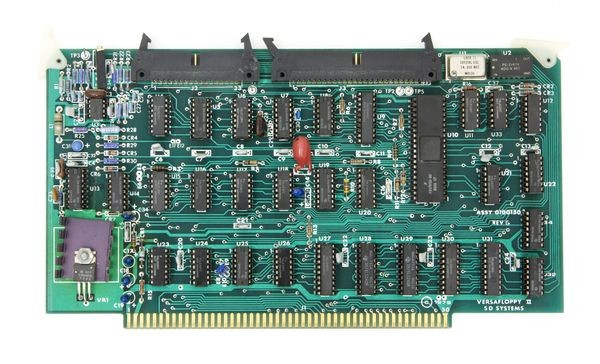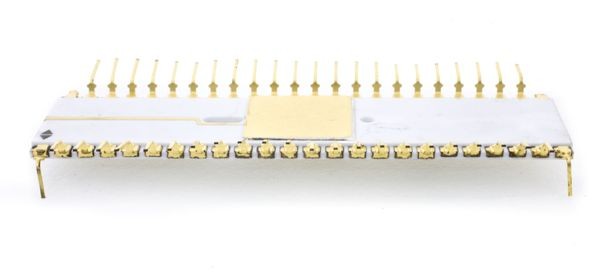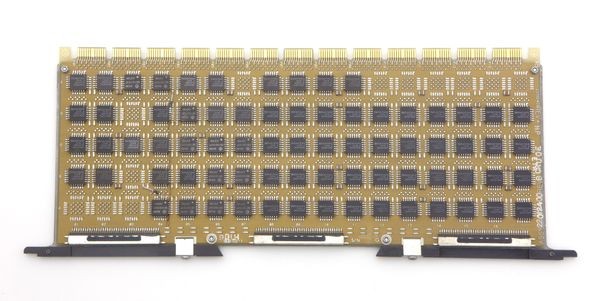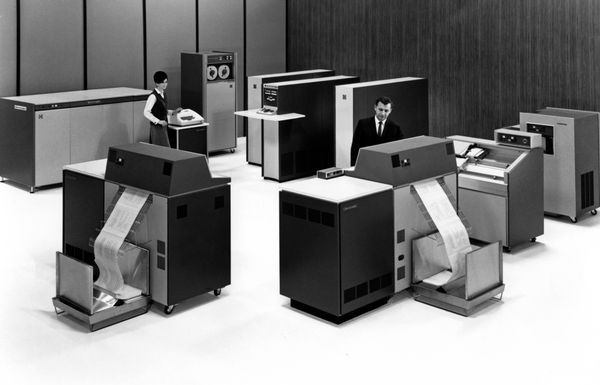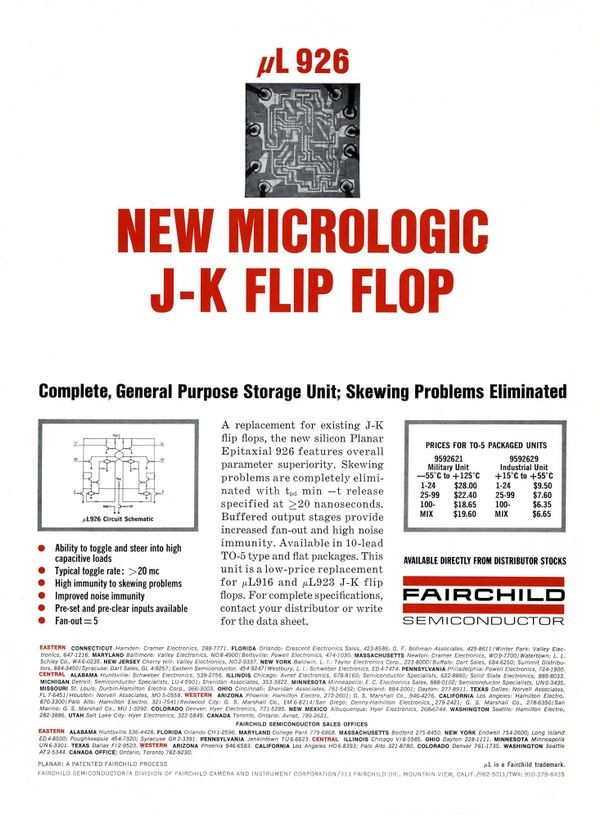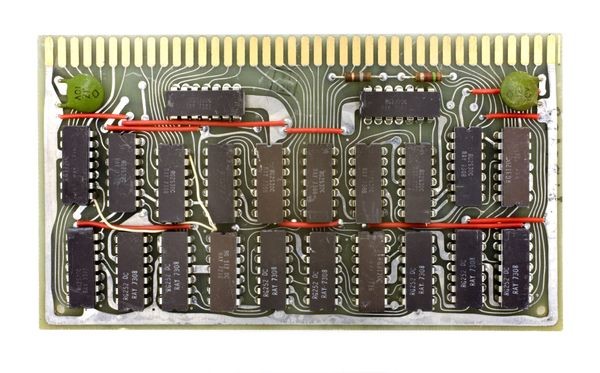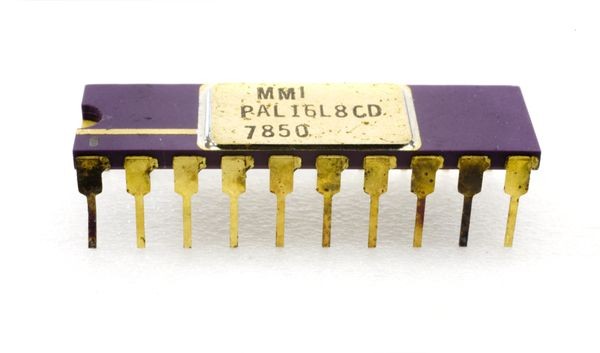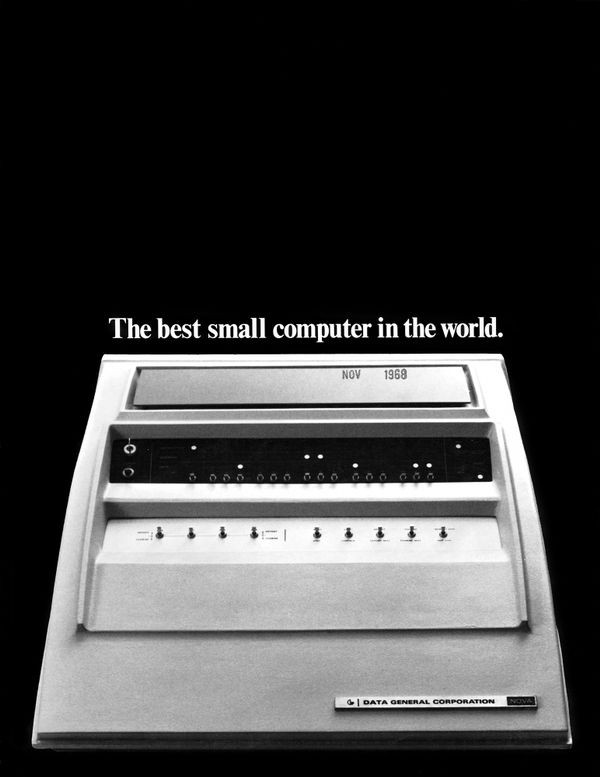ICs Rocket to Success
Apollo spacecraft
Every Apollo flight to the Moon carried two guidance computers that used Fairchild Micrologic “G” element ICs. One computer was in the Command Module, and one in the Lunar Module.
ICs Rocket to Success
Early integrated circuits were expensive. So engineers used them sparingly, where small size and low power consumption were paramount. Aerospace fit that description.
The Apollo Guidance Computer used Fairchild ICs and inspired new manufacturers such as Philco. Westinghouse joined Texas Instruments to build custom circuits for the Minuteman II missile.
Apollo Guidance Computer Block 1 logic module prototype
Requiring 200,000 Fairchild Micrologic circuits, the Apollo Guidance Computer project was the largest user of ICs through 1965.
View Artifact DetailEldon C. Hall with an Apollo Guidance Computer
Hall was lead hardware designer for the Apollo Guidance Computer at MIT’s Instrumentation Laboratory. Hall convinced NASA that ICs were the appropriate technology to use.
View Artifact DetailThe AC MAGIC and Martin MARTAC 420 military computers used Fairchild Micrologic ICs in this TO-5 style metal can package.
Molecular Electronic Computer brochure
This brochure for military contractors was prepared by TI to accompany a “solid circuit” demonstration computer.
View Artifact DetailMinuteman II missile
Minuteman missiles, named for the American Revolutionary War militia, were a key part of America’s Cold War defense arsenal. Minuteman II was the first in the series to use ICs.
View Artifact DetailMinuteman II Missile ICs, TI, 1964
TI won the contract for an ambitious program to produce 13 custom circuits for the Autonetics Minuteman II missile guidance system.
View Artifact DetailMinuteman II‘s IC's board replaced multiple Minuteman I transistor boards
These Minuteman II ICs were developed by Texas Instruments.
View Artifact DetailLitton AN/ASA27 logic module
Each Litton AN/ASA27 radar computer indicator circuit used four TI Series 51 DCTL packages encapsulated in the blue module.
View Artifact DetailEarly Variations on the IC Theme
Successive generations of integrated circuits steadily improved in speed, cost, density, power consumption, and ease-of-use. These advances stimulated diverse new applications. Expanding applications, in turn, unleashed aggressive market competition.
In 1962, Signetics introduced a popular Diode Transistor Logic (DTL) family of ICs. Fairchild quickly responded with an improved version. Transistor-Transistor Logic (TTL) was patented by TRW, commercialized by Sylvania, and popularized by TI. It attracted multiple vendors, which helped make it the standard logic family for small computers and peripherals—and the primary source of industry revenue through the early 1970s.
Mainframe computer maker IBM and its competitors ordered custom circuits tailored to specific needs. Fairchild and Motorola offered Emitter-Coupled Logic (ECL) families for high-speed supercomputer applications.
By the late 1970s, large scale integration (LSI) circuits such as gate arrays and programmable logic devices let users incorporate many functions from these early families into fewer packages, reducing system size and cost.
IBM MOD2 120-Gate Logic IC, TI, circa 1966
TI built this experimental “wafer-scale” integrated circuit for an IBM project funded by the U.S. Air Force.
View Artifact DetailTTL (Transistor Transistor Logic) board, SD Systems, 1979
TI’s plastic package 7400 Series TTL found wide application in computer peripherals such as this floppy disk controller board.
View Artifact DetailGate Array from VAX 11/730 breadboard, DEC, circa 1978
To reduce system size, the functions of many TTL logic chips could be packed into a single custom gate array.
View Artifact DetailECL (Emitter Coupled Logic), CDC, circa 1975
ECL circuits in closely-spaced, small flat packs offered very high speed logic to supercomputer manufacturers such as CDC and Cray.
View Artifact DetailBurroughs B3500 computer system
One of the first commercial mainframe machines to use ICs, the B2500/3500 featured a special high-speed logic family called CTL, developed in cooperation with Fairchild Semiconductor.
View Artifact DetailLogic IC advertisement
Advertisements for early ICs typically contained a logic or circuit diagram, as well as a chip photo to show that it was real.
View Artifact DetailDTL (Diode Transistor Logic) module, Systems Engineering Laboratories, circa 1967
Fairchild’s easy to use Dual-in-Line Package (DIP) made the 930 Series DTL a popular choice of computer designers.
View Artifact DetailProgrammable Logic Device – Type 16L8, Monolithic Memories, 1978
Programmable Logic Devices (PLDs) allowed users to create specialized chips without having to design custom circuits.
View Artifact DetailData General Nova minicomputer
Data General’s Nova was one of the first minicomputers to use MSI (Medium Scale Integration) TTL logic circuits, which had 10 to 100 gates on each IC.
View Artifact DetailRelated Content
Learn more about early applications of integrated circuits
Aerospace systems are first the applications for ICs in computers
Standard IC Families introduced for digital logic applications
The first mainframe computers to employ ICs
Computers enable economic custom ICs
